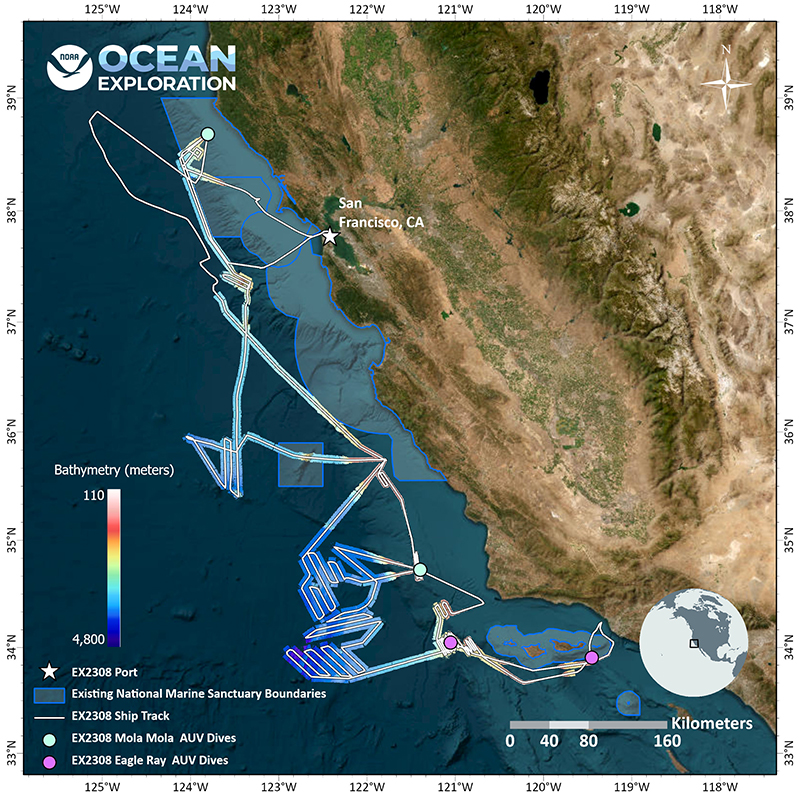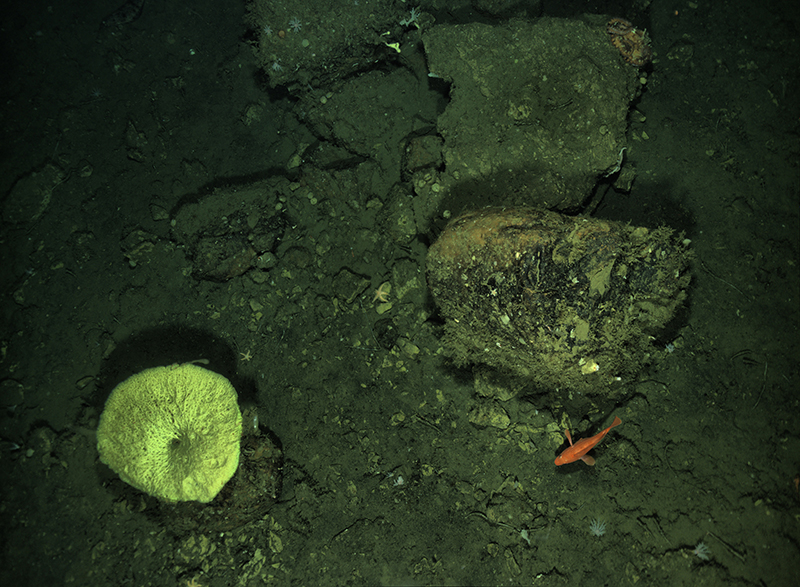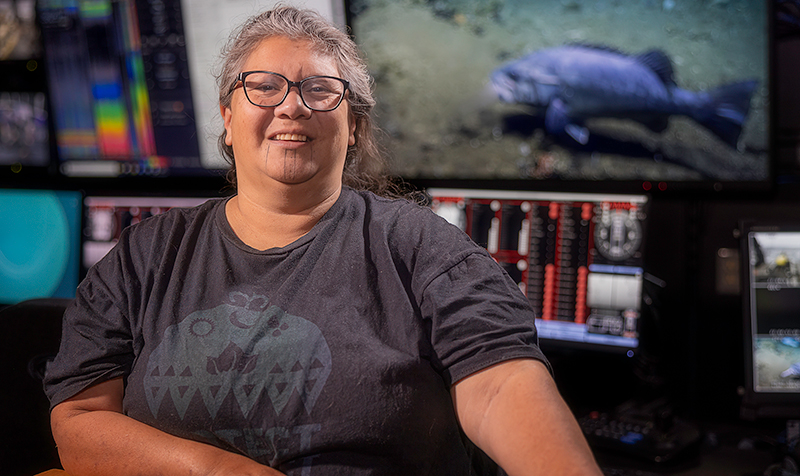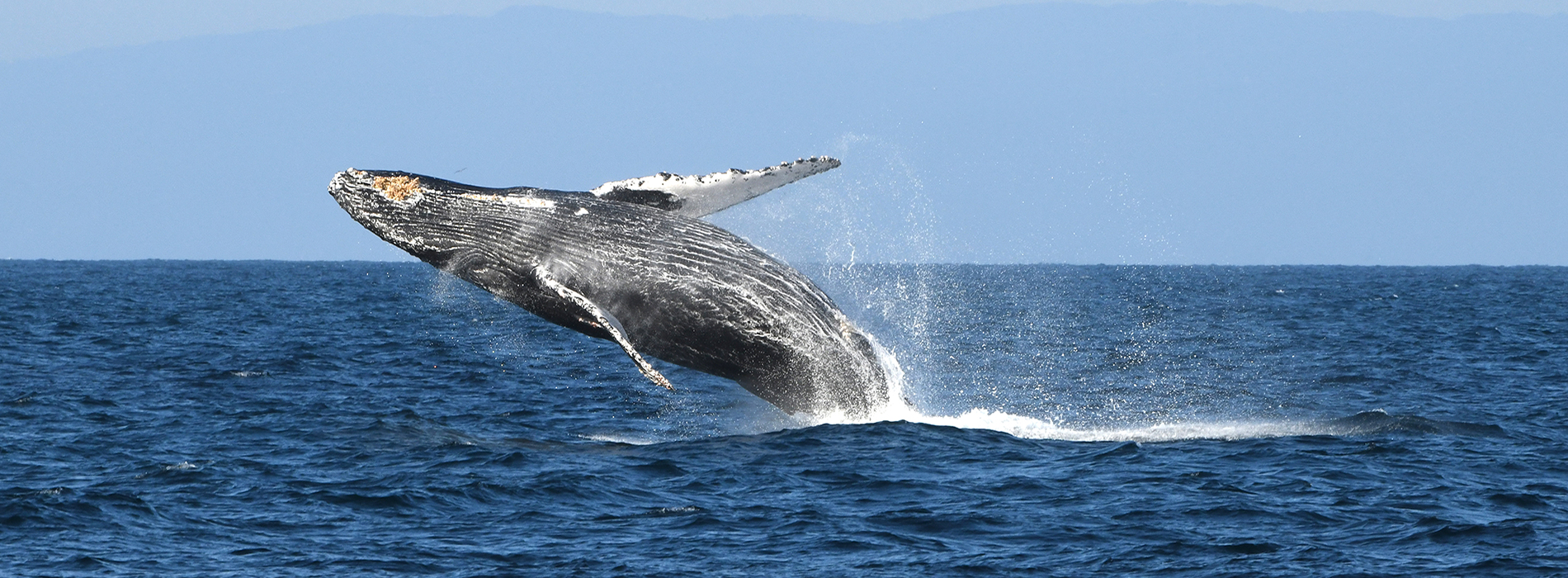
EXPRESS: Exploration of Central California Coast (AUV and Mapping) (EX2308)
Past Expedition
Expedition Summary
To speed up the pace of ocean exploration, NOAA Ocean Exploration is committed to technological innovation and expansion of our own capacity to explore. As such, one of the primary goals of this expedition was to test autonomous underwater vehicle (AUV) operations to better understand how we might incorporate AUVs into and augment standard operations on NOAA Ship Okeanos Explorer.
During the 2023 EXPRESS: Exploration of Central California Coast expedition, NOAA Ocean Exploration and partners tested autonomous underwater vehicle operations as part of an effort to learn more about the biology and geology of the region. Video courtesy of NOAA Ocean Exploration, 2023 EXPRESS: Exploration of Central California Coast. Download largest version (mp4, 214 MB)
AUVs offer a unique ability to collect seafloor data over large areas from just above the seafloor, allowing for the collection of higher resolution data than is possible from surface-based platforms. In partnership with the NOAA Ocean Exploration Cooperative Institute (OECI), we tested two AUVs owned and operated by the University of Southern Mississippi. This was the first time these AUVs were used on Okeanos Explorer.
- Eagle Ray, a traditional mapping AUV, is equipped with a multibeam sonar and sub-bottom profiler to collect high-resolution seafloor and water column mapping data.
- Mola Mola, a photo survey AUV, is equipped with powerful cameras and a laser to capture seafloor imagery and complementary mapping data.
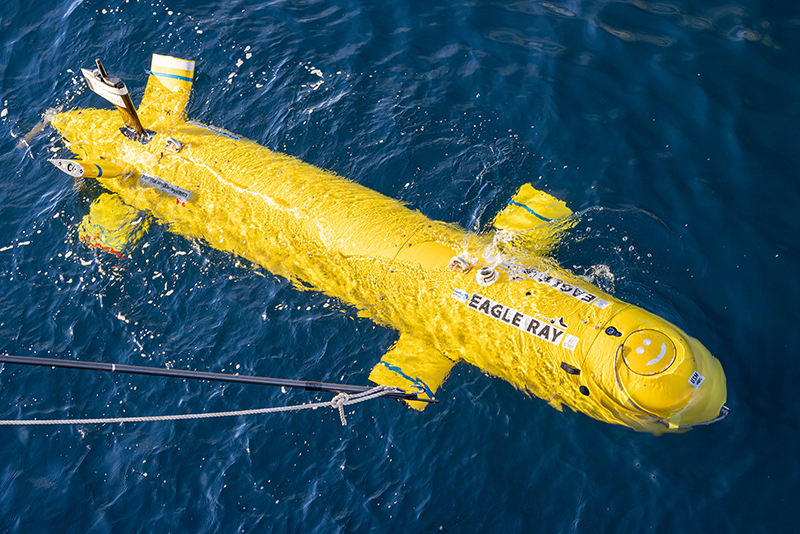
Download largest version (jpg, 5.89 MB).
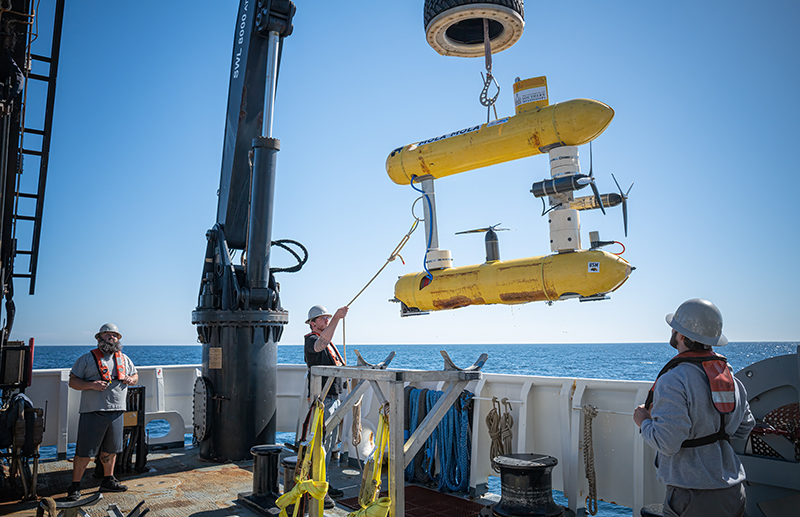
Download largest version (jpg, 3.74 MB).
Another goal of this expedition was to learn more about the biology and geology of the proposed Chumash Heritage National Marine Sanctuary — an area of national importance — for priority science and management purposes. To identify targets for this exploratory work, NOAA Ocean Exploration collaborated with NOAA’s Office of National Marine Sanctuaries, Channel Islands National Marine Sanctuary, and local tribal members.
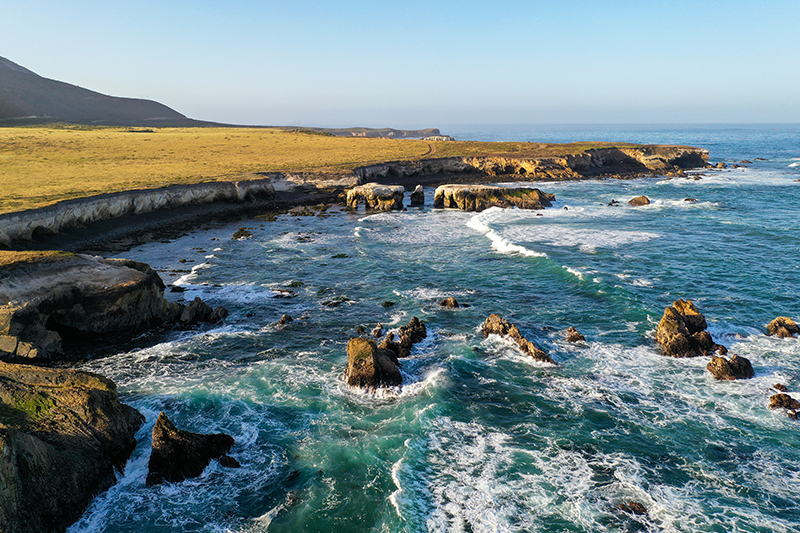
Download largest version (jpg, 6.22 MB).
Features
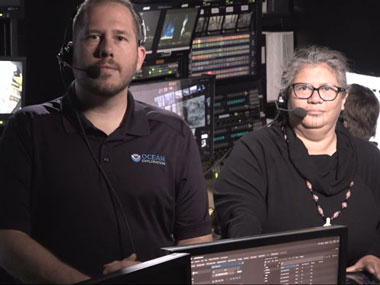
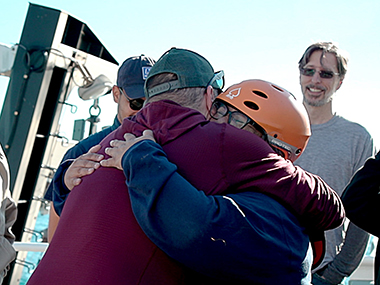
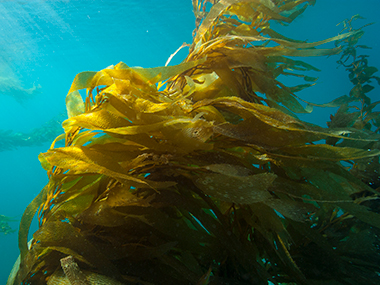
View Less
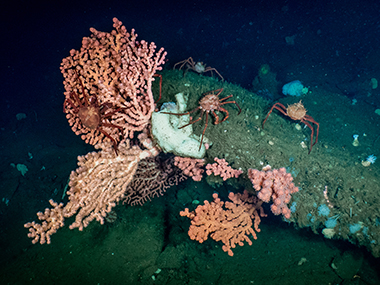
Multimedia
Featured multimedia assets associated with this project.
Education
Our Learn & Discover page provides the best of what the NOAA Ocean Exploration website has to offer to support educators in the classroom during this expedition. Each theme page includes expedition features, lessons, multimedia, career information, and associated past expeditions. Below are related top education themes for this expedition.
Meet the Exploration Team
Learn more about the team members and their contributions to this project.



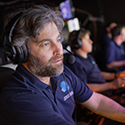

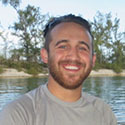
Expedition Data
Data collected during the expedition will be available in NOAA’s public data archives within 60-90 days of its completion and will be accessible via the NOAA Ocean Exploration Data Atlas.
Resources & Contacts
- NOAA Ocean Exploration Cooperative Institute
- University of Southern Mississippi School of Ocean Science and Engineering
- Channel Islands National Marine Sanctuary
- NOAA Office of National Marine Sanctuaries West Coast Regional Office
- NOAA Office of National Marine Sanctuaries
- Northern Chumash Tribal Council
-
Emily Crum
Communication Specialist
NOAA Ocean Exploration
ocean-explore-comms@noaa.gov -
Keeley Belva
Public Affairs Officer
NOAA Office of Marine and Aviation Operations
keeley.belva@noaa.gov -
Sarah Marquis
West Coast/Pacific Media Coordinator
NOAA Office of National Marine Sanctuaries
sarah.marquis@noaa.gov -
Shauna Fry
Outreach Coordinator
Channel Islands National Marine Sanctuary
shauna.fry@noaa.gov

